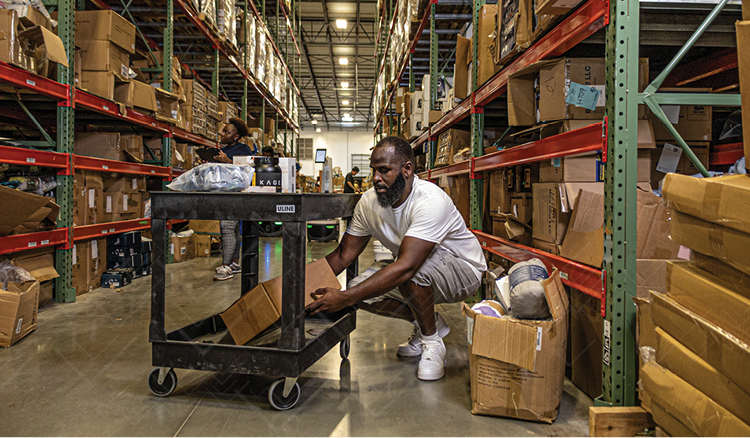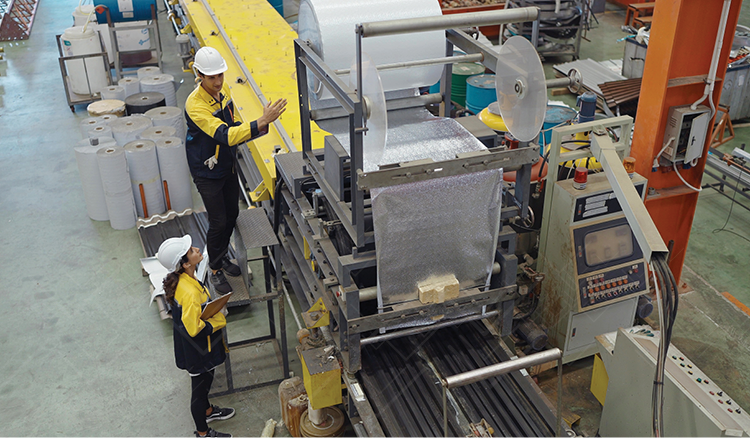What is Supply Chain Reshoring? How to Respond to Uncertainty

Uncertainty is plaguing everyone’s world view now with how the past year has unfolded and how that will project forward into the future. One thing is for certain, top operations leaders share similar concerns as they evaluate their business driving into 2021. In this recent Supply Chain Dive opinion poll, executive leaders voted on their top concerns:

At the top of the list are the concerns of: How frequent and how long will port delays impact receipt of goods and raw materials? What transportation modes can I rely on to move goods and raw materials?
These are two driving concerns across manufacturing and supply chain businesses as port congestion has hit record levels and container boxes are nowhere to be found in China for export. The next two major headaches (transportation capacity and vendor/manufacturing delays unrelated to ports) are out of your control in the short-run but can be better managed over the longer-term with a strategic plan and diligent execution.
At Veryable, we operate an on-demand labor platform to solve the need for efficiently responding to changes in customer demand, production schedules, or inbound materials. We understand that lots of uncertainty is out there for operations. We know that you need to be empowered to better manage their operational labor needs. In this article, we’ll outline actions you can take now to identify and scope your opportunities to move operations back to North America.
Supply chain reshoring: why and how to do it
- Identifying Extended Supply Chain Risks
- Unprecedented Port Congestion
- Ocean Carrier Availability
- Geo-political concerns
- Curing Extended Supply Chain Risks
- Mitigating Lost Know-how
- Supplier Diversification
Identifying extended supply chain risks
Unprecedented port congestion
The San Pedro Bay Port Complex has seen unprecedented volume through COVID-19. The current congestion has exceeded the levels seen in 2015 during the longshoreman strike, and the current peak is not showing much sign of slowing down, though the vessel queue has abated a bit. With COVID-19 consumption driving the volume surge, Americans are not soon to balance their spend back towards services given that much of the country is only just now opening up for business.
As a port customer, the extended delays put your customer orders and consistent operations in peril as no one can predict when your vessel will hit the dock to unload. Given the congestion, the port complex is handling more containers than ever and also feeling the pressure to ship empty containers back for rotation back to China.
Ocean carrier availability
At this point in the pandemic, the ocean carriers are laughing all the way to the bank. When the effects of COVID started whiplashing across supply chains, the ocean carriers blanked rotations to reduce capacity to maintain rate support. As America and the world worked through the initial wave of quarantine, the ocean carriers began raising rates and then adding back rotations and continued raising their rates.
Traditionally the week before Chinese New Year is the peak; however, this year, the peak volume took awhile subside and maybe now only starting to show signs of coming down as rates stabilize and soften. With the contracting seasoning beginning, the power is stacked towards the carriers right now due to the high volumes, limited vessel availability, and lack of containers available in China for export.
Geo-political concerns
Overall, tensions between China and the US have not simmered down enough to engender confidence that the relationship will meaningfully change in the coming months. The back and forth tariffs made business harder and increased the cost of products for consumers. With the trade war flaring up, the uncertainty around product cost and its impact on demand created more uncertainty for businesses to navigate to deliver on customer expectations.
Additionally, with China looking to extend its influence over the region, they have taken measures that could threaten the freedom of navigation through the surrounding seas. Coupled with the port congestion, inhibiting sea access between China and the US would add a new element of uncertainty to the travel time between ports.
Curing extended supply chain risks
In the face of all this uncertainty, you have steps you can take to position your business to better counter what the world will throw at you and increase the reliability of your business and win more customers in the process. The steps outlined below are all about pulling levers to place more control back in your hands to make the decisions required to serve your customers.
Mitigating lost know-how
The push to outsource parts and materials to low cost countries has left your business with limited know-how and process knowledge to bring the production execution back to your North American facility. At first this knowledge is viewed as a barrier, however, this is actually an opportunity to re-engineer the process around the latest customer expectations.
For the next iteration of the process, the capabilities and outcomes can now be decided by the customer requirements instead of limited by the current specifications of equipment. Taking a forward looking approach that mitigates the knowledge risk of returning the process back to North America. The process re-engineering can be simple process adjustments to new equipment purchases. Just by undertaking a value-stream mapping analysis, your business will identify pathways to be more robust and competitive in your market.
Once a hard look at the process is complete, then you can address the necessary equipment needs and skills required. From what we see on the labor side, people are hungry for an opportunity to compete, and they are the ones we want to bet on for building the US manufacturing base.
Supplier diversification
Category management
This can be an elusive attribute to build into your supply chain due to the tendency of skills, companies, and industries to build up in certain areas. Building supplier diversification is where time has to be spent to understand the category. While this isn’t always a fun task, evaluating the category is critical to understanding what inherent risks exist that are not mitigated by simply buying from more than one supplier. If a large portion of the suppliers are geographically concentrated, then this will mean that weather to geo-political uncertainty could create supply chain volatility.
When evaluating a category and supplier, understand the following:
- Where are the raw materials sourced?
- What common traits does the business have with its competitors? Ex. geography, process, trade lane, home country
- What are the shipping options?
- Where will you stack up in their customer priority?
Building up your category knowledge will help you figure out what kind of leverage you have in the category and where, as a customer, you can influence and better control your inputs.
Transportation Modes and Routing
Part of the category management is detailing the shipment type and INCOTERM governing the shipment. The trade route the goods or raw materials use to travel to your facility is highly critical to understanding how to mitigate them. The Port of LA/ Long Beach congestion has created huge delays for thousands of customers and businesses throughout America. If your business has supplies that most come from overseas, then you will be well-served to make sure that your suppliers are not using the same lane to send products to you.
Through these recent times, businesses that routed product through two ports or just a different port than LA / Long Beach experienced much better reliability clearing the ports and transitioning to ground transportation. The Port of Savannah is a great east coast alternative for shipping containers, and some carriers are adding Houston / Mobile / Savannah port rotations from Asia.
Even more local, if your business can be served from two different parts of the US, then your business will not be subjected to winter storm delays or government constraints.
Where to start mitigating risk
The goal of reshoring is about mitigating risks and putting your business back in control of serving its customers:
- Understand the category: competitors, inputs, geography, trade lanes
- Make vs Buy: can your business in-source it?
- Divide your spend to mitigate sole sourcing risk
- Have critical spares on-hand
The time is to act now for risk mitigation. Just like with critical spares, the time to inventory them is not when you need one but before the breakdown or equipment emergency hits.
You will never find it’s a bad time to make your business more robust. In these times, this will make your business a more reliable partner for your customers. Likewise, staying current in the transportation industry and how this will impact your business will only let you move faster. The Canadian-Pacific and Kansas City Southern railroads announced a big merger to create the ability for one railroad to move products from Mexico to Canada without an interchange between two different lines. This will only make North American sourcing more competitive.
How to solve the labor needs created by reshoring
The narrative over the past few years around globalization has included plenty of talk about labor being offshored, cutting American jobs in manufacturing and logistics. This has left its mark on the supply chain in the US, which was highlighted in 2020 like never before.
Whatever reason many companies might have had for sending the work overseas, when they reshore they will face the task of keeping prices and lead times steady while potentially raising labor costs. However, there are ways to ease this transition and remain competitive. In fact, you could even use localization and customization as competitive advantages.
To learn more about the future of your business and labor, read how to mitigate your labor risks with flexible capacity so you can respond in real-time to demand rather than relying on guesswork,
Previous Posts
How Policy Constraints, Not Just Production Bottlenecks, Threaten Your Bottom Line
The Future of Manufacturing and Logistics
Create a free business profile today to explore our platform.





